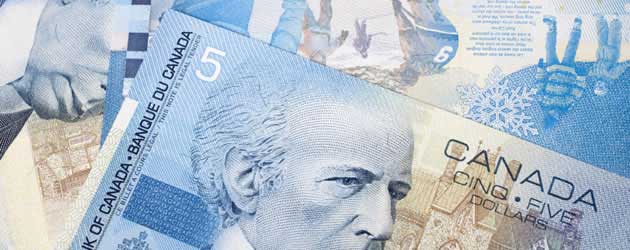
The Canadian Dollar (CAD) fell to a 6-month low against the US Dollar (USD) on Friday as strong jobs data out of the USA and domestic trade data weighed.
The ‘Loonie’ fell after data showed that Canada posted a surprise trade deficit in August. A fall in the exports of crude oil and cars to the US was blamed, as was a rise in the nation’s imports.
According to Statistics Canada, the nation’s trade deficit came in at C$610 million, abruptly ending a period, which saw three consecutive months of the nation posting trade surpluses. The previous months figure was also revised downward from C$2.58 billion to C$2.20 billion. Economists had been expecting a surplus of C$1.60 billion.
Exports declined by 2.5% to C$44.19 billion as the price of crude oil fell and as demand weakened from the Eurozone and US. The fall may have dented Bank of Canada Governor Stephen Poloz’s hopes that the nation’s economy had turned a corner.
The deficit with nations other than the USA widened to C$4.1 billion.
The deficit was also the largest recorded since November 2013 and added to a run of disappointing Canadian economic data releases. Last month saw the release of weaker than expected GDP growth data as well as a fall in employment.
‘The trade numbers are a disappointment. It appears as if net exports–exports minus imports–will have a neutral impact on third-quarter growth. In other words, net exports may neither add nor subtract to economic output in the July through September period. This would be “quite a change” as net exports had added to growth for seven consecutive quarters,’ said Douglas Porter, chief economist at BMO Capital Markets.
‘Loonie’ Falls as US Dollar Gains
The Canadian Dollar was also weakened by the publication of stronger than forecast employment data from the US.
The ‘Greenback’ surged higher against the ‘Loonie’ and most other major peers as the Washington based Labour Department said that the US unemployment rate fell from 6.1% to 5.9%.
The data also showed that the US economy created 248,000 new jobs last month, beating forecasts for a rise of 215,000.
A separate report also showed that the U.S. trade deficit narrowed to $40.10 billion in August from $40.30 billion in July, whose figure was revised from a previously estimated deficit of $40.60 billion.
Against the Pound, the Canadian Dollar made gains as the UK currency was weighed upon by a report showing that activity in the nation’s dominant services sector fell to a three-month low last month. The report raised concerns that the UK economy is not yet strong enough to warrant the Bank of England raising interest rates.
Canadian Dollar (CAD) Exchange Rates
[table width=”100%” colwidth=”50|50|50|50|50″ colalign=”left|left|left|left|left”]
Currency, ,Currency,Rate ,
Canadian Dollar, ,Pound Sterling,0.5562 ,
,Pound Sterling,0.5562 ,
Canadian Dollar, ,US Dollar,0.8878 ,
,US Dollar,0.8878 ,
Canadian Dollar, ,Euro,0.7097 ,
,Euro,0.7097 ,
Canadian Dollar, ,Australian Dollar,1.0244,
,Australian Dollar,1.0244,
Canadian Dollar, ,New Zealand Dollar,1.0590 ,
,New Zealand Dollar,1.0590 ,
US Dollar, ,Canadian Dollar,1.1260 ,
,Canadian Dollar,1.1260 ,
Pound Sterling, ,Canadian Dollar,1.7981 ,
,Canadian Dollar,1.7981 ,
Euro, ,Canadian Dollar,1.4096 ,
,Canadian Dollar,1.4096 ,
Australian Dollar, ,Canadian Dollar,0.9760 ,
,Canadian Dollar,0.9760 ,
New Zealand Dollar, ,Canadian Dollar,0.8734 ,
,Canadian Dollar,0.8734 ,
[/table]

